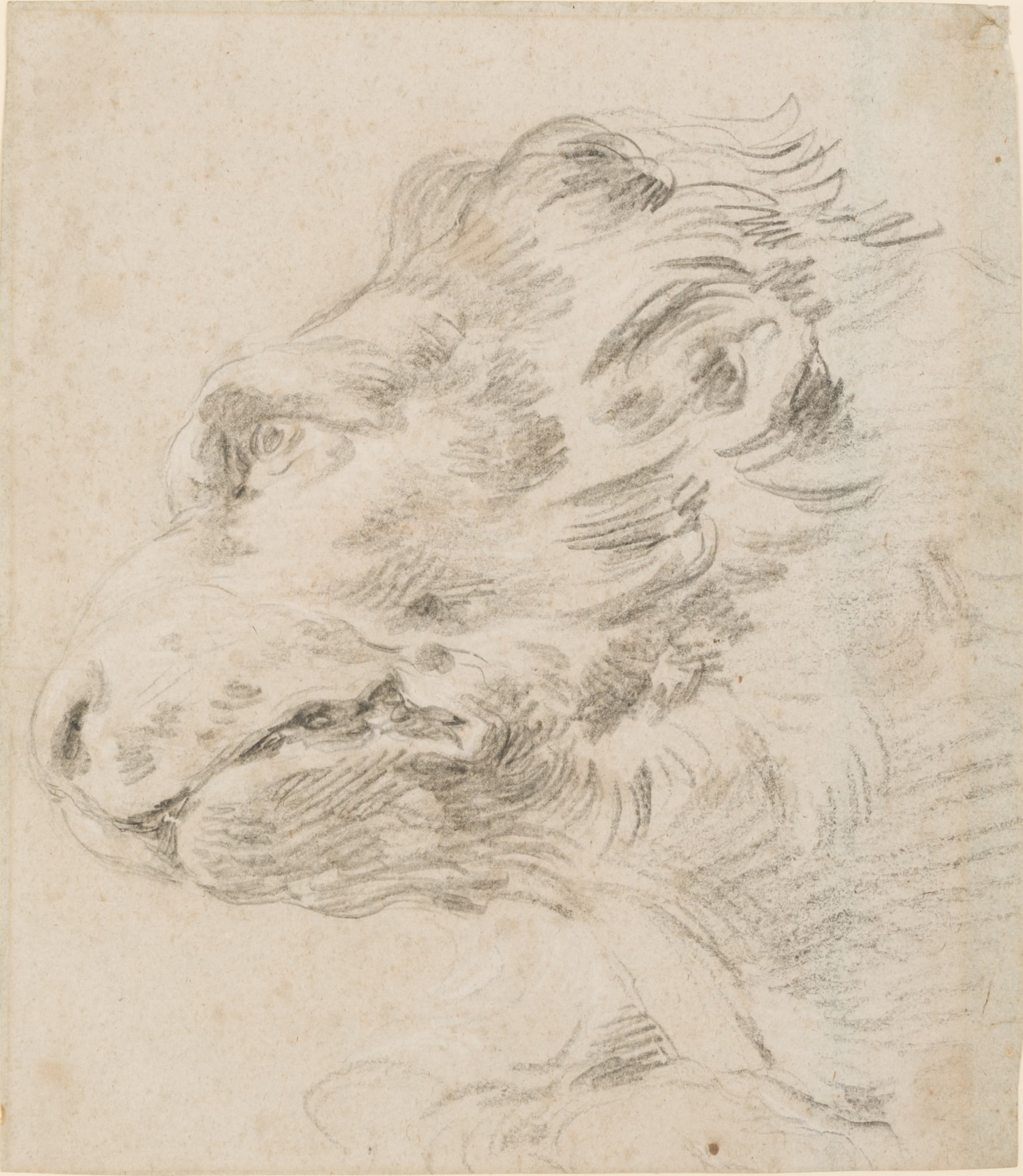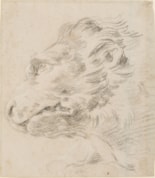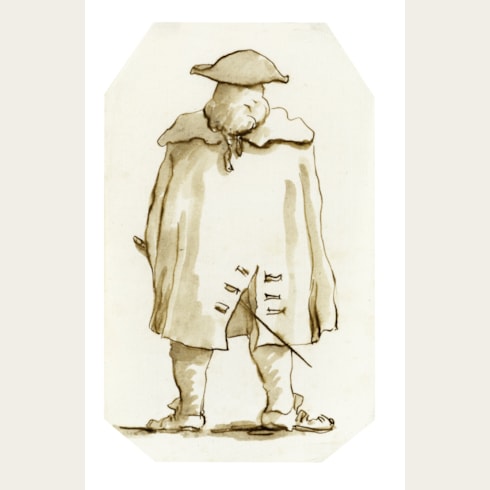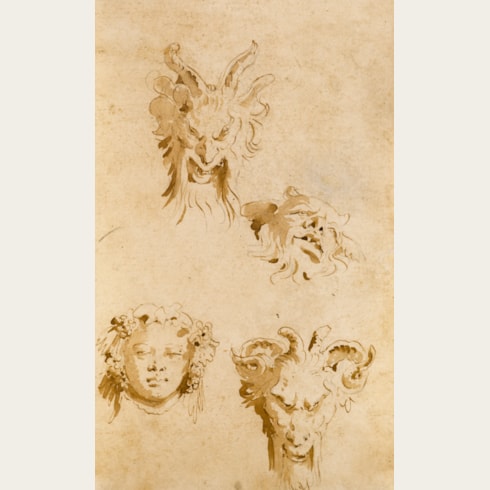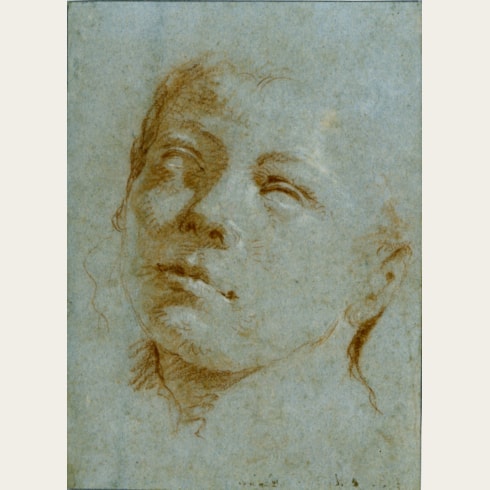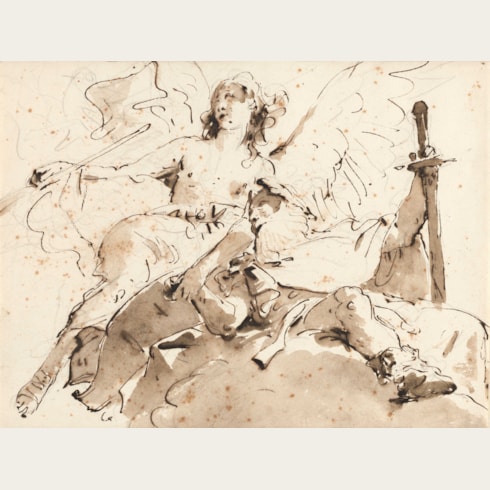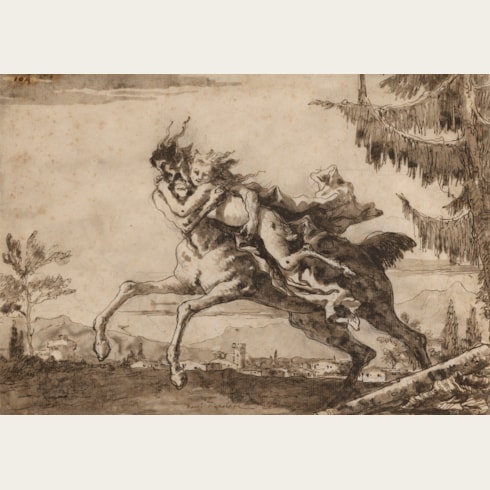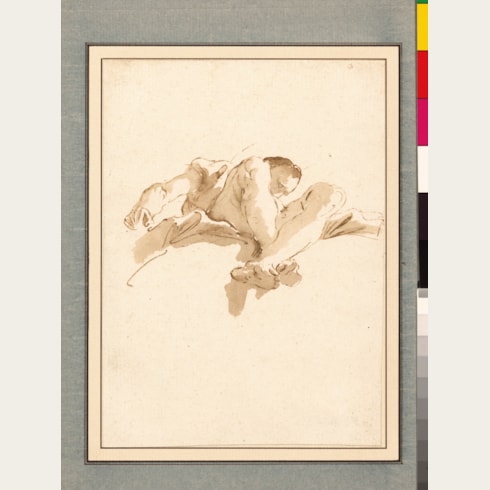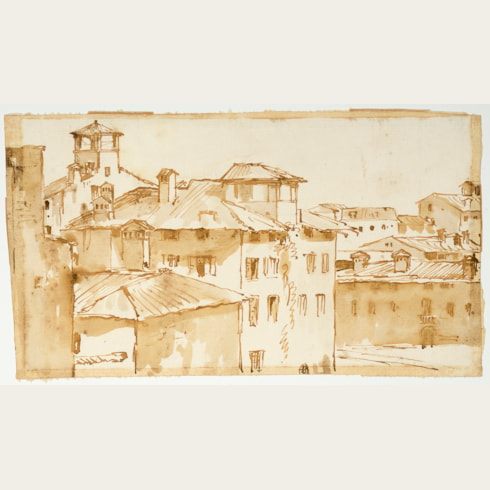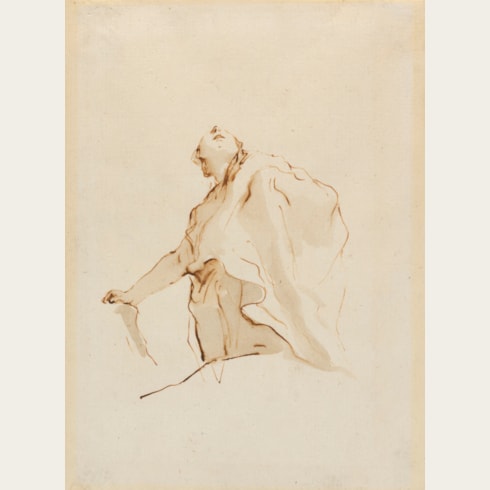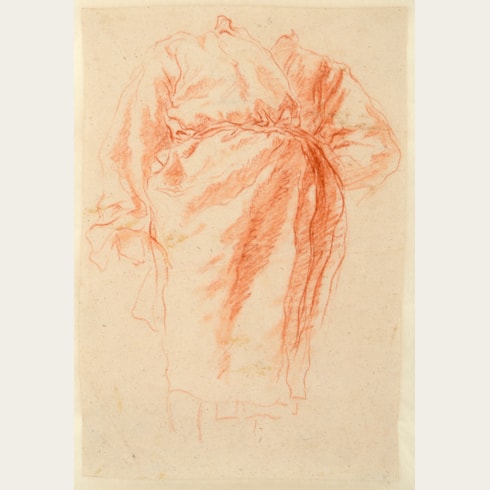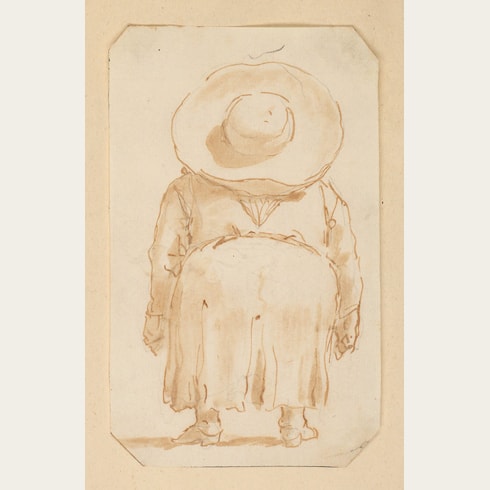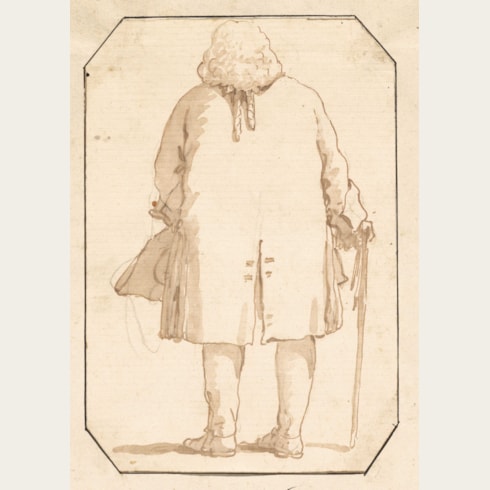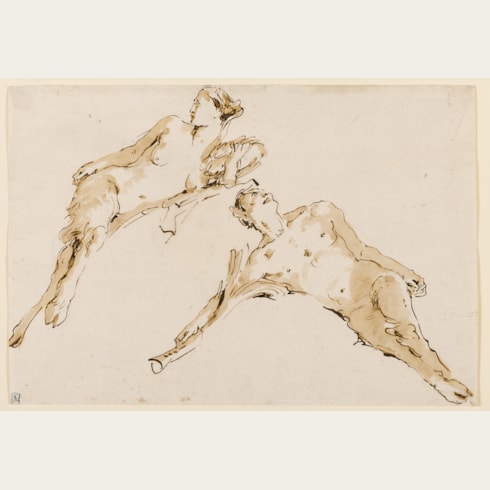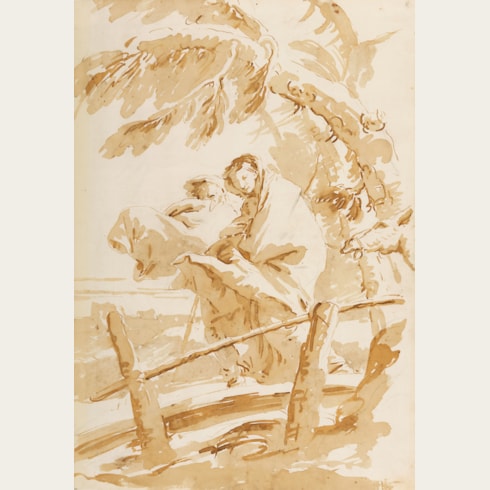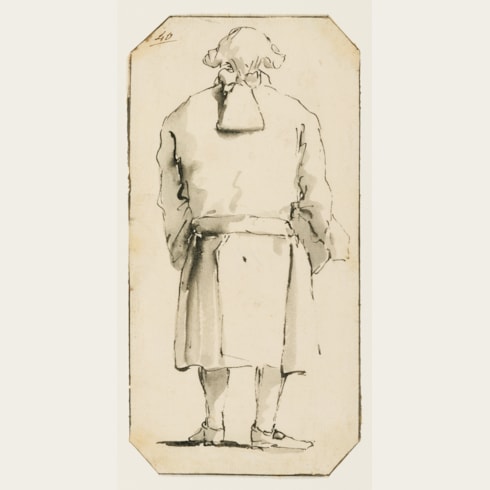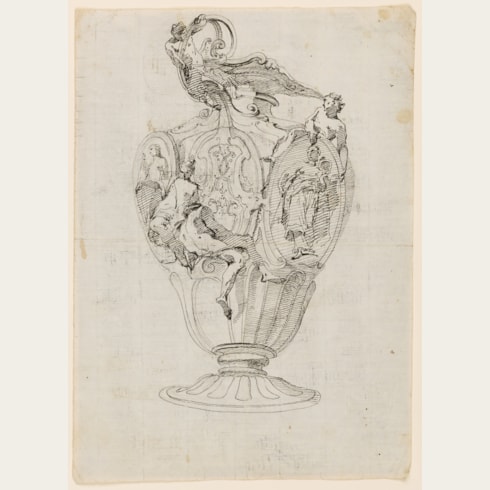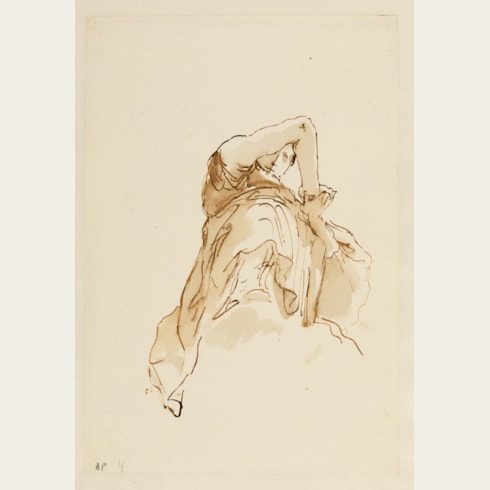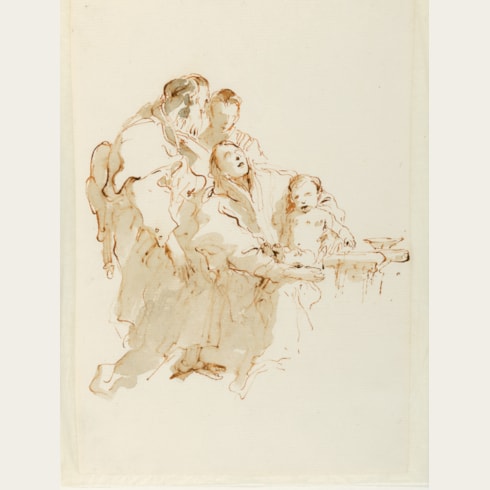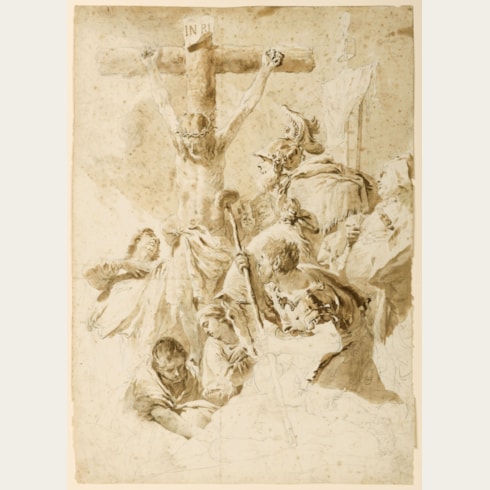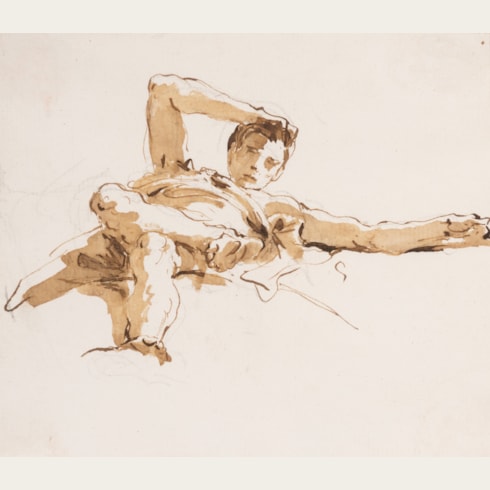Giovanni Battista TIEPOLO
(Venice 1696 - Madrid 1770)
The Head of a Lion
Numbered and inscribed No. 3066. (or 3086) i. f. G. M. and 432 on the verso.
Further inscribed Today, 9th of August 1972 / we, Eva and Kurt Cassirer / do give this drawing of a Lion head / by G. B. Tiepolo / to Irmi(?) D. F. Jones / Eva and Kurt Cassirer / DIESSEN, Ammersee on the backing board.
Also inscribed This drawing by Tiepolo / is of some value and is / [overwritten, in a different hand, not any more] the property of KURT / CASSIRER, and dated 9. 8. 1972 in a different hand, on a label pasted onto the backing board.
246 x 282 mm. (9 3/4 x 11 1/8 in.)
A somewhat similar, albeit much more sketchy, chalk study of the head of a lion looking to the left is part of an album of Tiepolo drawings - entitled Vari Studi e Pensieri T.I. (‘Various Studies and Sketches Vol.I’) - in the collection of the Victoria and Albert Museum in London.
This drawing was once part of a large and significant group of Tiepolo drawings in the Bossi-Beyerlen collection in Munich, formed by the painter Johann Dominik Bossi (1767-1853), who was born in Trieste and may have been a student of Domenico Tiepolo in Venice. He worked primarily as a miniaturist in Germany, Austria, Sweden and Russia before settling in Munich, where he was appointed a court painter. Bossi owned some eight hundred and fifty drawings by both Giambattista and Domenico Tiepolo, of which about six hundred and thirty were studies in black or red chalk on blue paper – including nearly three hundred studies of character heads - and the remainder in pen and grey or brown ink.
At his death, Bossi’s collection of drawings passed to his daughter Maria Theresa Caroline Bossi (1825-1881) and her husband Carl Christian Friedrich Beyerlen (1826-1881). In March 1882, six months after the death of Maria Theresa Bossi, the drawings were sold at auction in Stuttgart and dispersed. A large number of the Bossi-Beyerlen drawings (although none of the studies of heads) were acquired at the 1882 sale by the Staatsgalerie in Stuttgart, where they remain today. Another one hundred and twenty of the drawings, including the present sheet, passed through several German collections until they were dispersed in the early 20th century. A later owner of this drawing was the art dealer Kurt Cassirer (1883-1975).
The leading painter in Venice for much of his career, Giambattista Tiepolo was also undoubtedly one of the finest Italian draughtsmen of the 18th century. That his drawings were greatly admired in his lifetime is confirmed by contemporary accounts; indeed, as early as 1732 the writer Vincenzo da Canal remarked that ‘engravers and copyists are eager to copy his works, to glean his inventions and extraordinary ideas; his drawings are already so highly esteemed that books of them are sent to the most distant countries’. From the late 1730’s until his departure for Spain in 1762, Tiepolo enjoyed his most productive period as a draughtsman, creating a large number of vibrant pen and wash studies that are among the archetypal drawings of the Venetian Settecento. As one recent scholar has commented, ‘From the start of his career [Tiepolo] had enjoyed drawing as an additional means of expression, with equally original results. He did not draw simply to make an immediate note of his ideas, nor to make an initial sketch for a painting or to study details; he drew to give the freest, most complete expression to his genius. His drawings can be considered as an autonomous artistic genre; they constitute an enormous part of his work, giving expression to a quite extraordinary excursion of the imagination; in this respect, Tiepolo’s graphic work can be compared only with that of Rembrandt.’
Tiepolo’s drawings include compositional studies for paintings and prints, drawings of heads, figure studies for large-scale decorations, landscapes and caricatures, as well as several series of drawings on such themes as the Holy Family. Many of these drawings were bound into albums by theme or subject, and retained by the artist in his studio as a stock of motifs and ideas for use in his own work, or that of his sons and assistants.
Provenance
Johann Dominik Bossi, Munich
His daughter, Maria Theresa Caroline Bossi, Munich, and by her marriage to her husband, Carl Christian Friedrich Beyerlen, Stuttgart
Their posthumous sale, Stuttgart, H. G. Gutekunst, 27 March 1882 onwards, probably as part of lot 637 (‘Kohlenskizzen und -Zeichnungen auf blauem Papier…Studien von Händern, Füssen und Thieren. 8o und 4o. 17 Bl.’, bt. Eisenmann for 5.50 Marks)
Dr. Oskar Eisenmann, Kassel
Wilhelm Lübke, Stuttgart
Joseph Baer & Sons, Frankfurt
Dr. Hans Wendland, Lugano
Dr. Kurt Cassirer and Eva Cassirer, Dießen am Ammsersee
Given by them in August 1972 to Irmi(?) D. F. Jones
Private collection, United Kingdom.
Literature

